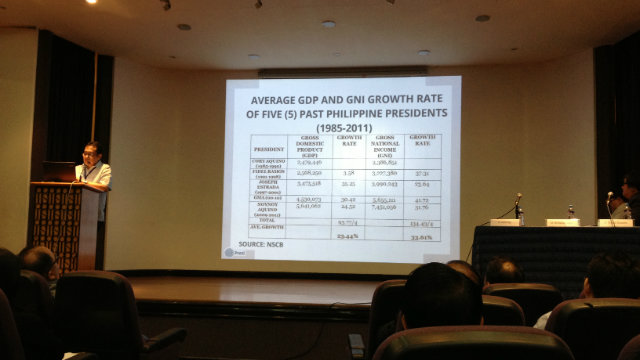SUMMARY
This is AI generated summarization, which may have errors. For context, always refer to the full article.

MANILA, Philippines – It will take around two more decades before the Philippines can become a tiger economy.
In a briefing at the University of Santo Tomas on Monday, February 11, economist Emmanuel Lopez said sustained growth of at least 7% is needed to attain tiger status.
“I still maintain my position that it should be 7% or more in the next 10 to 20 years so that after 20 years, we can call ourselves an economic tiger. For now, we are still an economic pussycat,” Lopez said.
Lopez’s statement was contrary to the World Bank’s. The multilateral lender earlier said the Philippines is now a ‘rising tiger’ following its 6.6% economic growth in 2012.
“We are still far from being an economic tiger, although we are going [in that direction]. But you cannot achieve tiger status if our economic growth is fluctuating. [Growth] must be something consistent, it must be something sustainable, and it must be something long-term,” Lopez said.
Lopez, in his presentation, said the Philippines, like other countries, has gone through a “boom and bust” economic cycle. He said growth picked up from 1.9% in 1985 to 6.7% in 1988 under the regime of the late former President Corazon Aquino, and 1.5% in 1991 to 6.8% in 1996 during the time of former President Fidel Ramos.
He said growth followed this pattern during the terms of former Presidents Joseph Estrada and Gloria Arroyo, contracting by 0.1% in 1998 and growing 4% in 1999, then accelerating to 4.9% in 1997 to 2009 and 7.6% in 2010.
He said the same is true even during President Benigno Aquino III’s term. In 2011, the economy slowed to 3.7%, then bounced back to 6.6% in 2012.
Manufacturing needed
Lopez said Philippine growth has been driven by real estate, which is not sustainable.
He said growth must be driven by manufacturing, where investments are long term. – Rappler.com
Add a comment
How does this make you feel?
There are no comments yet. Add your comment to start the conversation.